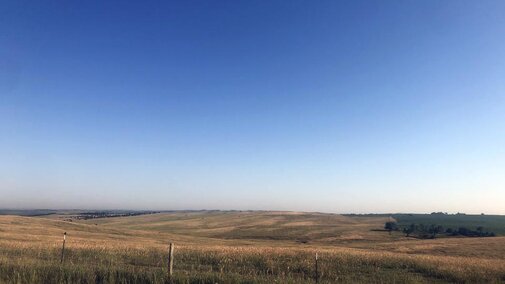Winter Survival in Alfalfa
The time for spring planting alfalfa is just around the corner, and selecting the right seed is crucial. Two traits we should take extra time to consider are fall dormancy and winter survival. These traits are often treated the same but are different. Today let’s look at winter survival.
Winter survival or winter hardiness is the ability for an alfalfa plant to make it through winter without injury, once the plant goes dormant. This is different than the fall dormancy rating that measures the alfalfa’s ability to prepare for and recover from dormancy. Winter survival is measured on a one to six scale, with one being extremely hardy and six not hardy. For Nebraska, a winter survival rating of three is about as high as we want to go.
As temperatures drop and days shorten, alfalfa plants change their physiology to survive freezing temperatures and make it through winter. While increased hardiness can result in reduced yield potential, for a high dollar perennial forage, having a full stand year after year is better in the long run.
In the past, winter survival traits were linked with fall dormancy. With new varieties, this isn’t always the case, so winter survival needs to be evaluated on its own.
We want to pick a winter survival ranking that will get us through winter without compromising yield. Where you are in the state plays a big role in what to pick. Winter temperatures affect the choice, but maintained snow cover is also important. As snow can help insulate the ground, parts of the state that regularly have open winters may need as high or higher survival rating than colder locations with winter-long snow cover.
Bottom line for Nebraska — a winter survival rating of three is about as high as we want to go and areas with open winters or regularly colder temperatures should be even lower.
Fertilizing Cool-season Grass Pastures
By Brad Schick
Fertilizing cool-season grass is something many producers do each year while accounting for forage needs, moisture, the value of the forage and fertilizer costs.
Fertilization of smooth bromegrass pastures should occur late March through April. If the nitrogen is a single application, usually between 80 to 100 lbs. of actual N per acre is suggested for eastern Nebraska. The recommended application rate declines westward across the state with about 30 to 40 lbs. N per acre suggested for the Panhandle.
If doing split applications, usually it's two-thirds in the spring and one-third in the fall when growth resumes on the cool-season grasses. With fertilized pasture, be sure to include a rotational grazing plan that will effectively harvest the extra forage and provide the greatest return on the fertilizer investment.
Something to consider when deciding to fertilize cool-season grass pastures — or any pasture for that matter — is that during drought years, the forage quality might still be very high even though yield might be reduced. Again, moisture limits the efficiency of fertilizer.
Research conducted in Eastern Nebraska has shown a 30% increase in forage yield with fertilization and the economic optimum rate is between 80 to 120 lbs. per acre. A crude protein increase from 16% to 20% was seen with fertilizer applications up to 160 lbs. That is a lot of fertilizer, but it did increase crude protein and organic matter digestibility while decreasing NDF or neutral detergent fiber. Always be aware when applying fertilizer, especially in pastures and fields near water sources such as ponds. Assure phosphorous and potassium levels are adequate for forage as well.
Brome pastures are hardy and we can and do graze them hard in Nebraska. Haying or grazing operations can benefit if managed correctly with fertilizer.

